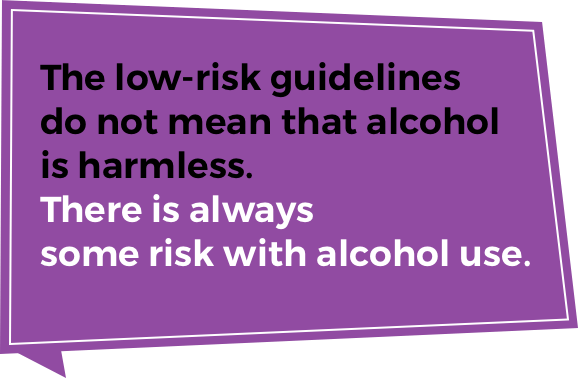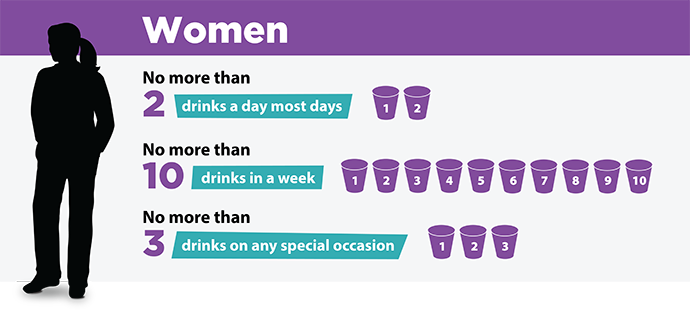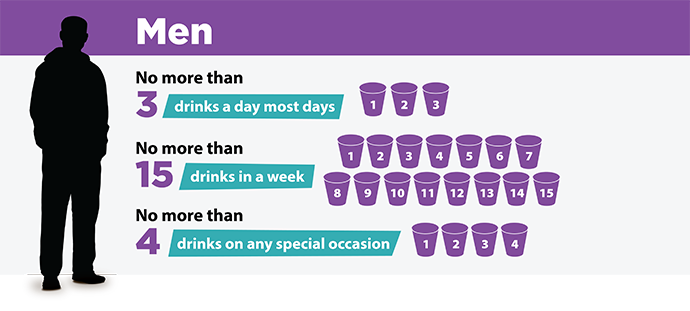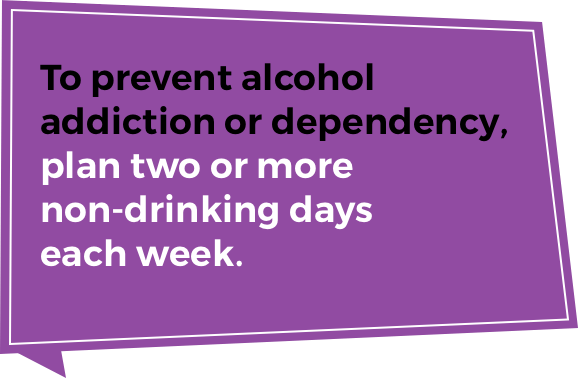Low-Risk Alcohol Drinking Guidelines
Canada's Low-Risk Alcohol Drinking Guidelines (low-risk drinking guidelines) were developed to help Canadians reduce their short-term and long-term alcohol-related harm. They refer to standard alcoholic drinks like wine, beer and hard liquor, as all have the potential to be harmful.

The low-risk drinking guidelines are not meant to encourage people to drink alcohol. They explain to people who choose to drink alcohol, that drinking more than the suggested amounts will put them at greater risk of injuries or long-term health and social problems, including alcohol addiction or dependency.
It is important to remember that these guidelines are “low-risk” guidelines - not “no-risk” guidelines. There is always some risk with alcohol use.
Suggested limits:



Click here for tips on how to reduce your risk.

 |
Did you know age matters?While people of any age should be careful about how much they drink, it is important that Elders (over 65) drink below the limits suggested in the low-risk drinking guidelines. When people get older, they are more sensitive to alcohol because their bodies break down alcohol more slowly. This means that alcohol has a stronger effect and can last longer in the body. It can increase their chances of injuries from accidents, falling down and worsening health problems. |
